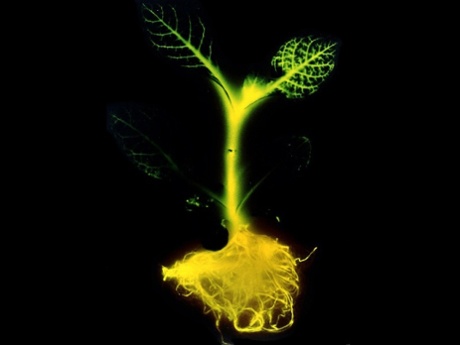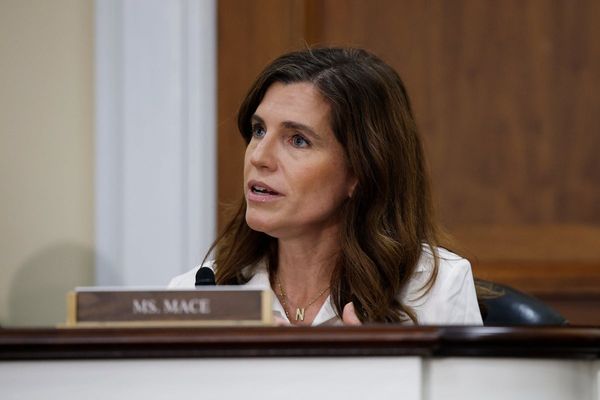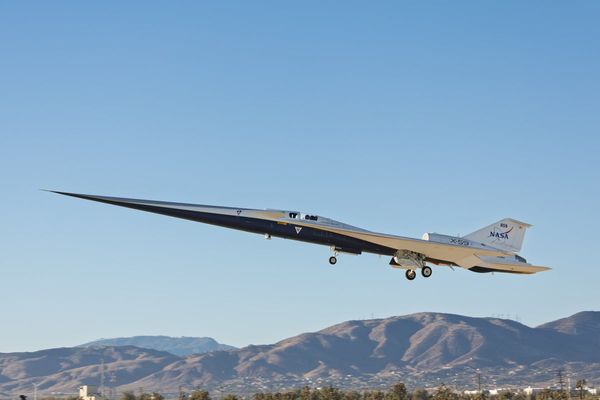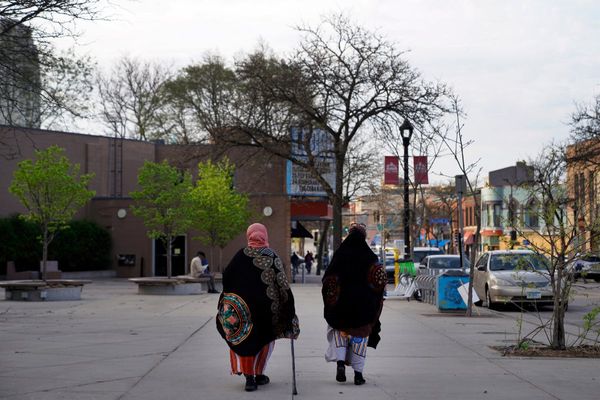
The petri dish spells it out in faint, dark letters: “Ceci n’est pas un E coli.” The play on the classic painting has a twist, though: while Magritte insisted his caption was accurate since it wasn’t a pipe but an image of one, here, the canvas really is Escherichia coli. Or at least it was, before it was genetically modified for capabilities far beyond its own.
Since E coli’s natural habitat – the darkness of the human intestine – doesn’t warrant light sensitivity, a sensor is added. Another upgrade instructs the bacteria to excrete an enzyme to stain the dish’s agar solution black when hit by light. The image itself is captured through a negative putting only the lit-up bacteria to work – the brighter the light, the darker the spot – and voilà: about a day later, a bacterial photograph.
Welcome to the strange world of biohacking, where enthusiasts push the boundaries for life as we know it.
Ceci n'est pas un E. coli #synbio @ACerneG pic.twitter.com/z9u2tvCM6S
— Mike Flanagan (@ChesterOrNot) November 4, 2015
Flanagan, the mastermind behind the artworks, hopes to dispel fears still surrounding germs and DIY biology. “There’s still the idea that bacteria are evil, that bacteria makes you sick,” he says. In jeans and a wool sweater over a shirt, the blue latex gloves he wears is to protect the organisms from humans, rather than the other way around.
“With the wrong set of circumstances and the wrong bacteria, its true: they can make you sick. But that’s almost like saying that all Americans are bad because some small fraction break laws and do bad things.”
Flanagan’s portfolio, kept in a small laboratory refrigerator, includes several portraits and a unicorn: this is GMO at its cutest. He doesn’t think of himself as an artist, but finds that the pictures help demystify to outsiders what he does for a living.
•••
For the next generation of hackers, microorganisms have become the new hardware, and DNA strands the new software.
Think of E coli as an iPhone, explains Flanagan, onto which you can install a never-ending variety of apps (in this case, designer genomes). The possibilities are limitless: in theory, organisms can be programmed to do just about anything – there are lifesaving pharmaceuticals, self-repairing concrete, glowing plants and synthetic saffron – and for the biohacking community, tapping into their revolutionary potential has become a perceived democratic right.
The technology is already becoming accessible to just about anyone. Much like Moore’s law for computers, the cost of sequencing DNA has fallen exponentially: in 2001, a million letters – base pairs – cost $100,000; today it’s around 10 cents. As one physicist put it, the domestication of biotechnology will dominate our lives for the next 50 years at least as much as the domestication of computers did during the previous 50. Had Bill Gates grown up today, he told Wired, he’d be hacking biology instead of computers.
In Brooklyn, science, like so many other things, has become artisanal. Behind an anonymous steel door in Fort Greene is Genspace: a fully functional molecular biology lab, complete with exposed brick walls, a cricket terrarium and inspirational Aldous Huxley quotes. This is the first nonprofit community lab in the US. In the freelance era, scientists need incubators and co-working spaces, too.
Behind bumper-stickered glass doors, wearing a hoodie over a SXSW T-shirt, Ellen Jorgensen, molecular biologist, TED-talker and Genspace’s founding member, instructs the Biohacker Boot Camp.
“Real innovation and creativity is very difficult to achieve when someone else is deciding what the purpose of your work is,” explains Jorgensen. “Here, no one is going to ask you if your project is worthy, or if it’s going to make money, or if it’s going to save the world.”
After a clip art-illustrated PowerPoint crash course in molecular biology, her students swab the insides of their cheeks, placing their samples in test tubes to boil and centrifuge until their DNA strands are separated and ready for analysis, to reveal anything from ancestry to disease predisposition.
Community labs such as Genspace have mushroomed up across the US. In 2011 a $35,000 campaign opened the doors of Biocurious, “a hackerspace for biotech” and beyond. What began as a Google group, with threads such as “Your opinion on reviving extinct species?”, became a movement.
Much of it snowballed from an MIT initiative: the International Genetically Engineered Machine (iGEM), a nonprofit organization and annual competition in biohacking projects ranging from bacterial sunscreen to vegan cow cheese.

It opened to the public after popular demand and became the world’s largest synthetic biology community. This year, 280 teams from all continents entered, with Genspace’s team awarded first prize for a custom-made fluorescent organism to monitor the neighborhood’s beloved but outrageously polluted Gowanus canal.
Biohackers are an eclectic community, united in utopian goals of providing an alternative to Big Science, ridding itself from the red tapes, patents and the monopolies of academia and industrial labs. In true hacker spirit, they preach open data, build low-cost laboratory equipment and off-the-shelf protocols. Earlier this year, a team of biohackers announced Open Insulin, a crowd-funded campaign to provide a generic, accessible alternative to patented, expensive diabetes drugs.
“We have no quarrel with Big Science; we merely recall that Small Science has always been just as critical to the development of the body of human knowledge, and we refuse to see it extinguished,” says the Biopunk Manifesto. “Who are the 20th century equivalents of Benjamin Franklin, Edward Jenner Marie Curie or Thomas Edison?” it asks, noting the troubling decline in citizen science.
With a streak of anti-establishment at heart, perhaps DIYbio was bound to be controversial. In the early days, headlines painted doomsday scenarios: were community labs “playing God” creating the next bioweapon? Could engineered organisms escape into the wild, Jurassic Park-style? Could the US president’s DNA be hacked for a personalized bioweapon (yes, really)?

Biohackers worldwide remember the tragedy of Steve Kurtz: an arts professor arrested on suspicions of bioterrorism as he called 911 after his wife died of a heart attack and petri dishes with bacteria were found in their New York house during a raid by dozens of agents in hazmat suits. Kurtz was only allowed to return home a week later, declared innocent and not a threat to public safety.
Insisting that fears are dramatically overstated, Genspace has come a long way in reversing negative perceptions. As part of the charm offensive, the lab opens its doors for the public at least once a month, for the PCR + pizza night, where newbies are invited to identify plant samples or isolate DNA from their saliva.
Genspace adheres to the Center for Disease Control’s Biosafety Level 1, working only with benign organisms (indeed, the strand of E coli used isn’t the one that causes stomach issues). “If you’re working with pathogens, you’re not part of the biohacker community, you’re part of bioterrorist community,” explains Jorgenson. Meredith L Patterson, author of the Biopunk manifesto, puts it more crudely: ”It’s a hell of a lot easier to learn to fly a 747 than it is to learn how to engineer a pathogen.”
But the promise of a grassroots bio-revolution still brings some unease: in 2013, a wildly successful crowd-funding campaign which received $484,013 promised to distribute seeds of engineered glow-in-the-dark plants. It provoked outrage (and a Kickstopper campaign) from environmental groups. Earlier this year, a UN report on synthetic biology warned it may adversely impact biodiversity and small-scale agriculture.
FlanaGen is undeterred, however: the benefits far offset risks.
“Most people have internet, but most people don’t hack banks,” says Shindel, laughing at the idea of accidentally opening Pandora’s box for the next Frankenstein (“We have enough trouble keeping single cell organisms alive!”) Like all technology, synthetic biology is subject to the “dual usage” paradox – everything can be used for good and evil.
“I think in 150, 200 years when people look back at synthetic biology, they will do it in the same way we look at electricity. They’ll take it for granted.”
Flanagan continues the analogy: electricity is dangerous too, but when his family house burnt down in an electrical fire a few years ago, they didn’t go off-the-grid and “move into a cave”. Benjamin Franklin probably encountered skepticism too, Flanagan says, but where would we be today if he had listened to them?
“This is about being on the right side of history. This is inevitable. History will judge us.”







